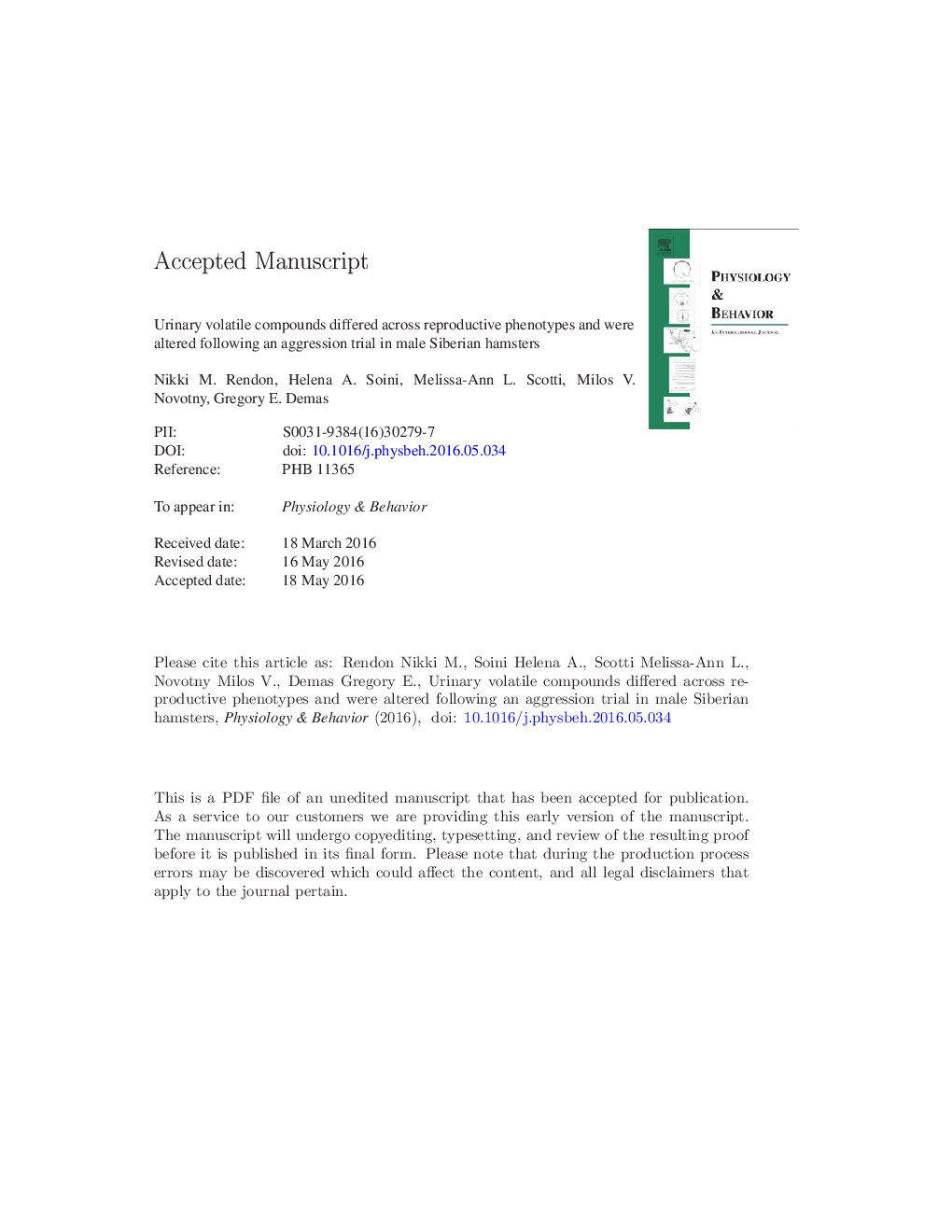| Article ID | Journal | Published Year | Pages | File Type |
|---|---|---|---|---|
| 5922588 | Physiology & Behavior | 2016 | 36 Pages |
Abstract
Chemical communication plays an integral role in social behavior by facilitating social encounters, allowing for the evaluation of social partners, defining territories and advertising information such as species and sex. Odors provide information about the social environment for rodents and other mammals; however, studies identifying chemical compounds and their functions have thus far focused primarily on a few species. In addition, considerably less attention has been focused on how environmental factors and behavioral context alter these compounds during periods of reproductive quiescence. We examined the effects of photoperiod and social context on chemical communication in the seasonally breeding Siberian hamster which displays modest territorial aggression during long “summer-like” days, but increased aggression in short “winter-like” days. We collected urine samples from long- and short-day male hamsters to investigate how photoperiod and subsequent changes in reproductive phenotype alter urinary volatile compound profiles. Next, we identified changes in urinary compounds before and after an aggressive encounter. Male hamsters exhibited a diverse urinary profile across photoperiods; however, long-day reproductive males showed higher levels of individual compounds when compared to short-day non-reproductive males. In addition, individual compounds were altered following an aggressive encounter; some changed only in long days whereas others changed regardless of photoperiod. Further, aggression and circulating levels of testosterone were positively correlated with urinary compounds in long-, but not short-day males. These findings suggest both photoperiod- and aggression-specific physiological regulation of urinary compounds in this species and contribute to a greater understanding of chemical communication more broadly.
Keywords
Related Topics
Life Sciences
Biochemistry, Genetics and Molecular Biology
Physiology
Authors
Nikki M. Rendon, Helena A. Soini, Melissa-Ann L. Scotti, Milos V. Novotny, Gregory E. Demas,
